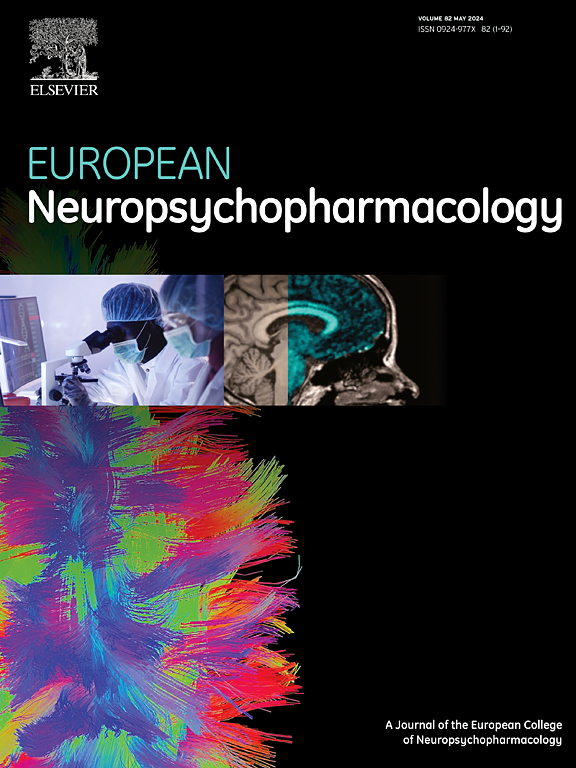STUDYING BRAIN BIOLOGY IN LIVING PEOPLE
IF 6.7
2区 医学
Q1 CLINICAL NEUROLOGY
引用次数: 0
Abstract
A goal of biomedical research is to advance knowledge of the molecular basis of human brain function. One way to achieve this goal is through studies of cells and molecules in samples of human brain tissue. As brain samples from living people (“LIV samples”) are largely unavailable for research, most such studies are conducted using brain samples from postmortem donors (“PM samples”). This practice, while necessary, is subject to four key limitations. First, the extent to which PM samples faithfully represent LIV samples at the molecular level has not been rigorously investigated. Second, in contrast to the living brain, the postmortem brain is by definition not capable of any meaningful function – therefore, the molecular basis of human brain functions like perception, mood, and memory cannot be fully established using PM samples. Third, the postmortem state is unsuitable for studying the molecular relationship between the brain and more readily accessible tissues - most importantly, the blood - and this hinders biomarker discovery. Fourth, valuable information about PM sample donors (e.g., neuroimaging data, deep clinical phenotyping information) is often not available to researchers, thus precluding comprehensive understanding of how functions emerge from the biological, electrophysiological, and anatomical features of the human brain.
The Living Brain Project (LBP) was designed to help address these limitations. The LBP is a translational research framework predicated upon the deep brain stimulation (DBS) procedure. From each LBP study participant the following is obtained: samples of the prefrontal cortex (PFC), peripheral blood samples obtained simultaneously with the PFC, intracranial electrical recordings, neuroimaging, and deep clinical phenotyping. To date, analyses of LBP data have identified (1) the safety of the PFC biopsy approach, (2) widespread biological differences between LIV samples and PM samples, (3) biological signatures of neurotransmission, (4) complex patterns of molecular communication between the brain and the blood, and (5) relationships between brain biology and structure. Overall, the LBP framework provides a blueprint for the safe, ethical, and scalable study of brain biology in living people and enables the investigation of fundamental questions about the brain that were previously unable to be studied.
研究活人的大脑生物学
生物医学研究的一个目标是推进对人类大脑功能分子基础的认识。实现这一目标的一种方法是通过研究人类脑组织样本中的细胞和分子。由于来自活人的大脑样本(“LIV样本”)在很大程度上无法用于研究,因此大多数此类研究都是使用来自死后捐赠者的大脑样本(“PM样本”)进行的。这种做法虽然是必要的,但受到四个关键限制。首先,PM样品在分子水平上忠实地代表LIV样品的程度尚未得到严格的研究。其次,与活的大脑相比,死后的大脑根据定义不具备任何有意义的功能——因此,人类大脑功能的分子基础,如感知、情绪和记忆,不能用PM样本完全建立起来。第三,死后状态不适合研究大脑和更容易接近的组织(最重要的是血液)之间的分子关系,这阻碍了生物标志物的发现。第四,研究人员通常无法获得关于PM样本供体的有价值的信息(例如,神经成像数据,深入的临床表型信息),从而阻碍了对人类大脑的生物学,电生理和解剖学特征如何产生功能的全面理解。“活脑计划”(LBP)旨在帮助解决这些限制。LBP是一个基于深部脑刺激(DBS)程序的转化研究框架。从每个LBP研究参与者中获得以下数据:前额叶皮层(PFC)样本,与PFC同时获得的外周血样本,颅内电记录,神经成像和深度临床表型。迄今为止,对LBP数据的分析已经确定了(1)PFC活检方法的安全性,(2)LIV样品和PM样品之间广泛的生物学差异,(3)神经传递的生物学特征,(4)脑和血液之间分子通讯的复杂模式,以及(5)脑生物学与结构之间的关系。总的来说,LBP框架为安全、伦理和可扩展的活人脑生物学研究提供了蓝图,并使研究以前无法研究的关于大脑的基本问题成为可能。
本文章由计算机程序翻译,如有差异,请以英文原文为准。
求助全文
约1分钟内获得全文
求助全文
来源期刊

European Neuropsychopharmacology
医学-精神病学
CiteScore
10.30
自引率
5.40%
发文量
730
审稿时长
41 days
期刊介绍:
European Neuropsychopharmacology is the official publication of the European College of Neuropsychopharmacology (ECNP). In accordance with the mission of the College, the journal focuses on clinical and basic science contributions that advance our understanding of brain function and human behaviour and enable translation into improved treatments and enhanced public health impact in psychiatry. Recent years have been characterized by exciting advances in basic knowledge and available experimental techniques in neuroscience and genomics. However, clinical translation of these findings has not been as rapid. The journal aims to narrow this gap by promoting findings that are expected to have a major impact on both our understanding of the biological bases of mental disorders and the development and improvement of treatments, ideally paving the way for prevention and recovery.
 求助内容:
求助内容: 应助结果提醒方式:
应助结果提醒方式:


